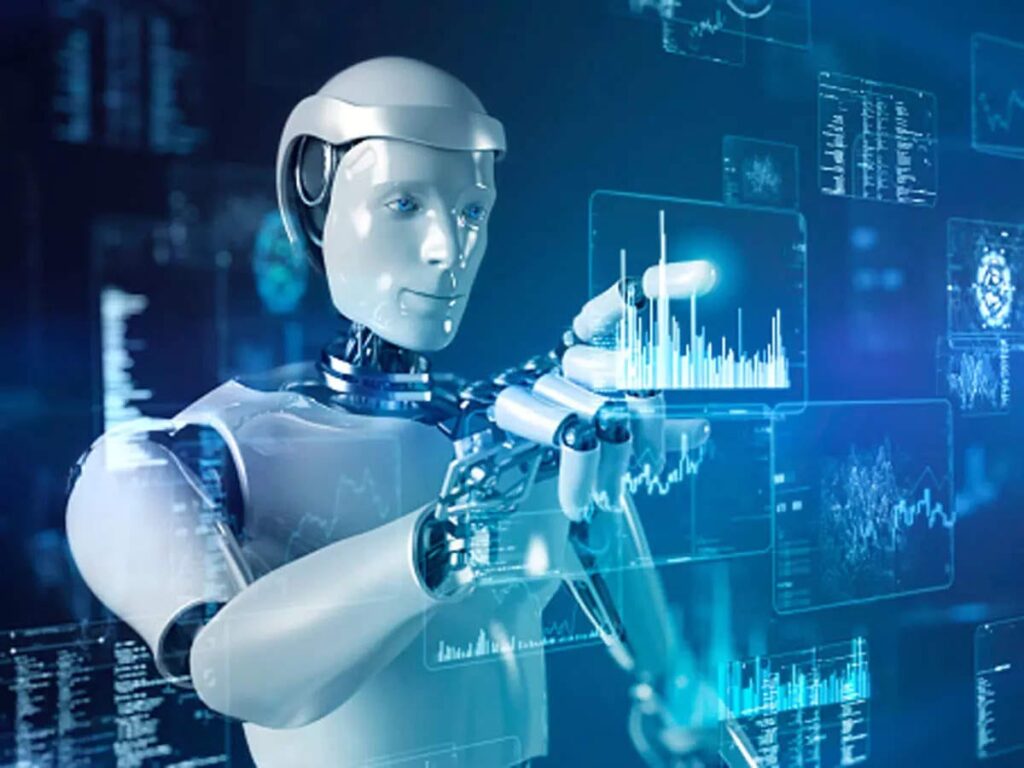In 2025, the world of robotics is experiencing an unprecedented boom, disrupting traditional industry boundaries. As technological innovations multiply, autonomous robots and advances in artificial intelligence are redefining the operational models of many economic sectors. In France, the applications of robotic technologies are proving to be as bold as they are impressive, affecting everything from health to agriculture, not to mention the automation of industrial processes It should be noted that the economic and social impact of these innovations is considerable: not only do they improve the efficiency of operations, but they also offer innovative solutions to the talent shortage in industry. Robotics giants such as Fanuc , ABB, and Yaskawa are leading the way, investing heavily in innovation to adapt to growing needs. As French companies showcase their latest advances at international trade shows, it is becoming clear that robotics is now playing a central role in our transition to Industry 4.0

Recent advances in industrial robotics
Recent advances in industrial robotics demonstrate a dramatic evolution in technology. This has been made possible by the integration of artificial intelligence (AI) and the improvement of autonomous systems. Modern robots are proving to be indispensable tools for industry, bringing a level of efficiency and flexibility previously unmatched. In 2025, we are witnessing a notable transformation where robots are no longer confined to simple production tasks. They are now diving into diverse applications, such as predictive maintenance and supply chain optimization. One significant advancement is the improvement in robots’ perception and decision-making capabilities, enabling them to operate in more complex environments. Companies such as Fanuc, ABB, and Yaskawa continue to play a leading role in this revolution. These industrial giants hold 17%, 14%, and 12% of the robotics market, respectively, and are investing heavily in strategic partnerships to adapt to the industry’s changing demands. At the same time, human-robot collaboration, or “cobotics,” is booming. “Cobots” (collaborative robots) are designed to work alongside humans, maximizing productivity without compromising safety. They are paving the way for what some are already calling Industry 5.0, where humanization and automation coexist harmoniously. According to the IDC report, investment in industrial robotics technologies is expected to grow by 13% by 2025, highlighting the growing recognition of these machines as essential to the future of industrial activities.
Applications of robotics in the medical sector
In 2025, robotics will become even more integrated into the medical sector, offering advances that will fundamentally transform the way care and diagnostics are performed . Surgical robots enable surgical procedures with extreme precision, thus reducing postoperative complications and accelerating patient recovery. Their articulated arms, often assisted by AI, improve complex procedures, offering a level of precision that sometimes exceeds human capabilities. Beyond surgery, robots have seen their applications expand to include rehabilitation and elderly care. Innovations include robots capable of assisting patients with their daily routines, restoring a degree of independence to dependent individuals. This type of support is crucial, especially in societies facing demographic challenges such as an aging population. According to recent analyses, the deployment of medical robotics also has a positive socio-economic impact. Hospitals can streamline their operations, reducing costs while ensuring higher quality services. Improvements in the efficiency of care not only mean economic gains but also a real improvement in the quality of life of patients . These advances provide much-needed support to healthcare staff, who are often under pressure in a constantly evolving sector.
Impact of robotics on modern agriculture
The deployment of robotics in agriculture is one of the most promising aspects of recent technological advances. Modern farmers now benefit from advanced robotic solutions that optimize crop management and overall yield. Thanks to innovations such as agricultural drones and automated harvesting robots, farms are moving toward precision agriculture. Drones enable detailed field analysis, monitoring crop health, detecting diseases early, and measuring soil quality, helping farmers make informed decisions. These precise techniques result in significantly improved yields while minimizing the use of inputs such as pesticides and fertilizers. Harvesting robots, on the other hand, are capable of performing repetitive tasks, freeing farmers from arduous manual labor. By constantly adjusting their movements to ambient conditions, they ensure efficient and environmentally friendly harvesting. Farms that adopt these technologies see a notable transformation in their production processes, promoting more sustainable and efficient agriculture. The economic outlook is significant, supporting expanding agricultural production while meeting the growing needs of a constantly growing global population.
Socioeconomic impacts of robotics
The rise of robotics in 2025 reflects a transformation that has profound repercussions for society and the economy. First, it helps increase process efficiency in many sectors, from manufacturing to automated delivery systems. With increased automation, companies can produce with unparalleled precision while reducing downtime. However, these advances also spark debates around employment. While robotics generates new job opportunities, particularly in the maintenance and development of advanced robotic technologies, it also poses challenges in terms of workforce reallocation. 75% of industrial companies report a talent shortage, highlighting the urgent need to adapt training programs to meet the demands of this new technological era. Additionally, French roboticists participate in international trade shows to showcase these innovations, emphasizing the importance of local ingenuity. Advances in robotics, if managed well, can be a major catalyst for economic growth, stimulating industrial activity and increasing the competitiveness of French companies on the global stage. These events are not only showcases of innovation but also forums for discussion and reflection on the long-term impact of robotic technologies on our society.
Towards Future Innovations and Trends in Robotics
Trends through 2025 show that robotics will need to explore new technological and human dimensions. With the rise of collaborative robotics, he sector is seeking to strengthen effective interactions between humans and robots. Researchers and engineers are increasingly interested in integrating emotional intelligence into robotic systems, thus enabling more intuitive and user-friendly interactions with humans. As Industry 5.0 pushes the boundaries, the focus is on innovative and sustainable building materials. Robots will become lighter, more robust, and more resilient to diverse environments. Beyond simply performing tasks, they will be able to make complex decisions based on continuous, intuitive, and contextual learning thanks to advanced AI. Finally, the development of technologies powered by Big Data represents another key opportunity. These technologies enable the accurate analysis and prediction of behaviors and needs in real time, thus providing a solid foundation for increasingly user-oriented innovations. Monitoring these trends is essential not only to understand the future directions of robotics but also to anticipate their impact on global business models and economic structures. Such explorations allow us to stay at the forefront of technological innovation and approach this future with proactivity and insight.
Conclusion The Transformative Impact of Robotics on Modern Industry
Recent advances in robotics are redefining modern manufacturing, propelling production capabilities to unprecedented levels. By integrating technologies such as artificial intelligence and autonomous robotics, companies are gaining efficiency, reducing costs, and improving the quality of their production. This robotization phenomenon is a fundamental pillar of the ongoing digital transformation, often referred to as Industry 4.0. In today’s increasingly pressing talent shortage, robotics fills some of the gaps by offering automated solutions where human labor is lacking. Companies that invest in these technologies benefit from increased flexibility, allowing them to quickly adapt their processes to market needs. Business leaders are increasingly aware that to remain competitive, they must embrace these technological innovations. Industry giants such as Fanuc ABB n and Yaskawa continue to dominate the market thanks to strategic investments in research and development. However, the dynamism of robotics extends beyond large companies, with numerous startups emerging to address the specific challenges of small and medium-sized businesses. These new players often bring innovative and more accessible solutions, facilitating the democratization of robotics. In France, the enthusiasm for this technology is manifested by an increased presence at international trade fairs , where local companies proudly display their robotic innovations. These not only contribute to strengthening France’s technological image on a global scale, but also to stimulating the local economy through the development of new skills and job opportunities. In summary, robotization continues to reshape industry at an impressive pace. The opportunities it presents require agile and proactive adaptation from economic players, who must now view technology not only as a means of optimizatio but, ass a fundamental strategic asset for the future.


